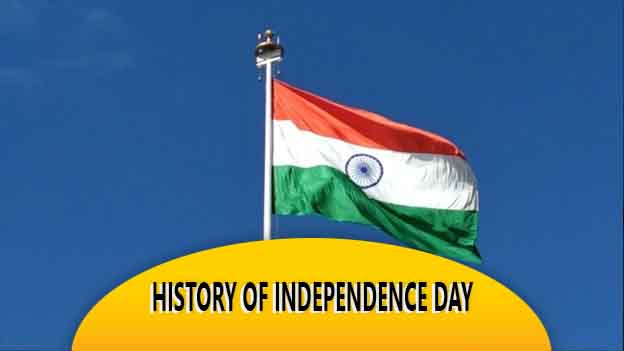History Of Independence Day: Independence Day in India is a day of great significance and pride for every Indian citizen. It marks the end of British colonial rule and the birth of an independent nation. This article delves into the historical journey of India’s struggle for freedom and the events that led to the celebration of Independence Day on August 15th.
Pre-Independence Era
The British Raj in India (1858-1947)
After the Sepoy Mutiny of 1857, the British Crown took over direct control of India, leading to the establishment of the British Raj. India became a colony ruled by British officials, and the Indian people were subjected to various oppressive policies and laws.
Early Movements for Independence
The Indian National Congress (INC), founded in 1885, played a crucial role in the early movements for independence. Leaders like Dadabhai Naoroji, Bal Gangadhar Tilak, and Lala Lajpat Rai advocated for self-rule and voiced the demands of the Indian people. History Of Independence Day.
The Struggle for Freedom
Non-Cooperation Movement (1920-1922)
Under the leadership of Mahatma Gandhi, the Non-Cooperation Movement was launched as a peaceful protest against British policies. It involved boycotting British goods, institutions, and services, which dealt a significant blow to the colonial administration.
Civil Disobedience Movement (1930-1934)
Another milestone in India’s struggle for independence was the Civil Disobedience Movement, also led by Mahatma Gandhi. The famous Dandi March in 1930 saw thousands of Indians marching to the Arabian Sea to produce salt illegally, defying British salt laws.
Quit India Movement (1942)
The Quit India Movement was a mass civil disobedience campaign launched by Gandhi during World War II. He called for “Do or Die” to demand an end to British rule in India. This movement led to widespread protests and strikes across the country.
- Also Read:
Independence and Partition
Independence Day (August 15, 1947)
Finally, after years of relentless struggle, sacrifices, and negotiations, India attained independence on August 15, 1947. The Indian Independence Act was passed by the British Parliament, leading to the partition of British India into two separate nations, India and Pakistan.
The Tryst with Destiny
On the eve of Independence, Jawaharlal Nehru, India’s first Prime Minister, delivered the iconic “Tryst with Destiny” speech, emphasizing the nation’s commitment to building a free and democratic country.
Post-Independence Challenges
Integration of Princely States
One of the major challenges post-independence was the integration of princely states into the newly formed nation. Sardar Vallabhbhai Patel played a vital role in persuading these states to join India.
Communal Tensions and the Role of Gandhi
Communal tensions between Hindus and Muslims escalated during the partition. Mahatma Gandhi relentlessly worked to promote unity and communal harmony, but his assassination in 1948 was a great setback for the nation.
Conclusion
History Of Independence Day: Independence Day in India stands as a symbol of courage, resilience, and unity in diversity. The journey from colonial rule to freedom was filled with sacrifices and determination. It reminds us of the power of non-violence and the strength of unity in achieving the seemingly impossible.
FAQs: History Of Independence Day
-
Why is Independence Day celebrated on August 15th?
India gained independence from British rule on August 15, 1947, and hence, this day is celebrated as Independence Day.
-
Who was the first Prime Minister of India?
Jawaharlal Nehru was the first Prime Minister of India.
-
What was the Quit India Movement?
The Quit India Movement was a mass civil disobedience campaign launched by Mahatma Gandhi in 1942 to demand the end of British rule in India.
-
What was the significance of the Dandi March?
The Dandi March was a symbolic act of civil disobedience that defied British salt laws and inspired millions of Indians to join the struggle for freedom.
-
Who played a vital role in integrating princely states into India?
Sardar Vallabhbhai Patel played a crucial role in persuading princely states to join India after independence.
